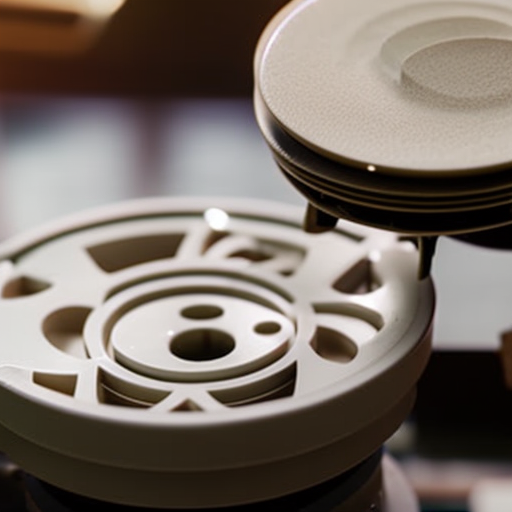Ceramic Engineering: A Comprehensive Overview
Ceramic engineering is a branch of materials engineering that focuses on the development, design, and production of ceramic materials. These materials, which are typically non-metallic and inorganic, have a wide range of applications due to their unique properties, including high melting points, hardness, and resistance to wear, corrosion, and heat.
Types of Ceramic Materials
Ceramic materials can be classified into four main categories: traditional ceramics, advanced ceramics, glass, and cement. Traditional ceramics, such as clay products, porcelain, and bricks, have been used for centuries. Advanced ceramics, on the other hand, are engineered to have superior properties and are used in cutting-edge applications. Glass, which is an amorphous solid, is also considered a type of ceramic material. Cement, including Portland cement, is used extensively in construction.
Properties and Applications
Ceramic materials possess several unique properties that make them suitable for a wide range of applications. They have excellent thermal and electrical insulation properties, making them ideal for use in electrical components and insulation materials. Their high melting points and resistance to wear and corrosion make them suitable for use in high-temperature environments, such as in gas turbines and furnaces. Ceramic materials are also used in biomedical applications, as they are biocompatible and can be used for bone implants and dental prosthetics.
Processing Techniques
The processing of ceramic materials involves several techniques, including powder synthesis, shaping, and sintering. Powder synthesis is the process of creating ceramic powders with specific properties through methods such as precipitation, sol-gel, and spray drying. Shaping techniques, such as pressing, extrusion, and slip casting, are used to form the desired shape of the ceramic component. Sintering, which involves heating the shaped ceramic at high temperatures, is used to densify the material and enhance its mechanical properties.
Challenges in Ceramic Engineering
While ceramic materials offer many advantages, there are also several challenges associated with their use. One major challenge is their brittleness, which makes them prone to cracking and fracture. To address this issue, researchers are developing new processing techniques and composite materials that combine ceramics with other materials to improve their toughness. Another challenge is the difficulty in achieving uniform microstructures and controlling defects during processing, which can affect the material’s properties and performance.
Recent Developments
In recent years, there have been significant advancements in ceramic engineering. Researchers are exploring the use of nanotechnology to enhance the properties of ceramic materials. By manipulating the structure and composition at the nanoscale, it is possible to improve their mechanical strength, electrical conductivity, and thermal stability. Additionally, additive manufacturing, or 3D printing, is being used to fabricate complex ceramic components with precise geometries, opening up new possibilities for design and customization.
Career Opportunities
Ceramic engineers have a wide range of career opportunities in various industries, including aerospace, automotive, electronics, energy, and healthcare. They can work in research and development, product design, manufacturing, quality control, and technical sales. With the increasing demand for advanced materials and the growing importance of sustainability, ceramic engineers play a crucial role in developing innovative solutions and materials for the future.
In conclusion, ceramic engineering is a multidisciplinary field that involves the development, design, and production of ceramic materials. These materials offer unique properties that make them suitable for a wide range of applications, from electrical components to biomedical implants. Despite challenges such as brittleness and processing difficulties, recent advancements in nanotechnology and additive manufacturing are driving innovation in the field. Ceramic engineers have exciting career opportunities in various industries and are at the forefront of developing advanced materials for the future.












